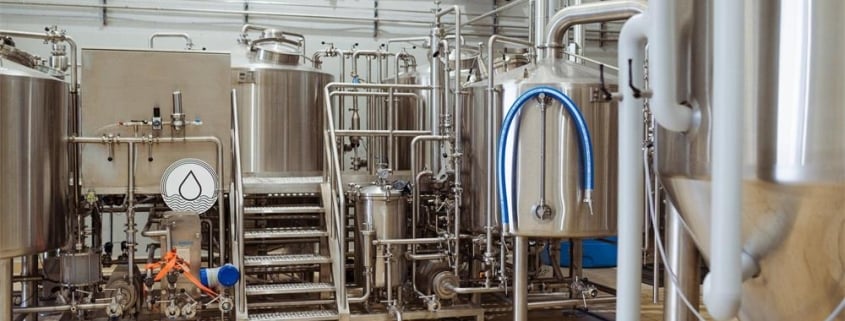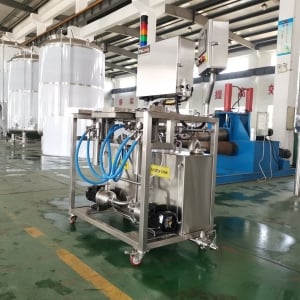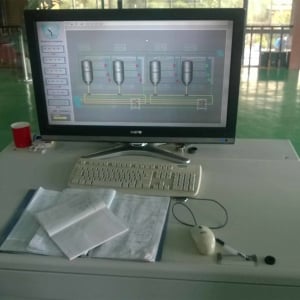Wine Making Equipment for Sale
Wine – a beverage steeped in history and culture, enjoyed for its complex flavors and social significance. But did you know you can craft your own delicious wines from the comfort of your home? With the right wine making equipment, transforming fresh grapes or other fruits into delectable wines becomes a reality.
This comprehensive guide delves into the world of wine making equipment for sale, equipping you with the knowledge to choose the perfect setup for your needs. We’ll explore the essential tools, delve into the wine making process, and answer frequently asked questions to ensure you embark on your wine making journey with confidence.
Essential Wine Making Equipment Guide
Wine making can be broken down into several key stages, each requiring specific equipment. Here’s a breakdown of the must-have tools for successful wine making:
| Equipment | Description |
|---|---|
| Primary Fermenters: | These containers, typically glass carboys or plastic buckets, house your grape must (crushed grapes) during the initial fermentation stage. |
| Airlocks: | These ingenious devices allow carbon dioxide to escape during fermentation while preventing unwanted contaminants from entering the container. |
| Hydrometers & Thermometers: | Monitoring sugar content and temperature is crucial for optimal fermentation. Hydrometers measure sugar levels, while thermometers track temperature. |
| Siphons: | These handy tools facilitate the transfer of liquids between containers without disturbing sediment. |
| Carboy Stoppers & Drilled Stoppers: | Stoppers seal fermenters, while drilled stoppers allow for the airlock to function. |
| Bottles & Corks: | Showcase your creation in stylish wine bottles sealed with high-quality corks. |
| Corker: | A corker effectively seals your wine bottles for storage and enjoyment. |
| Sanitizer: | Maintaining a clean environment is vital to prevent spoilage. Sanitize all equipment thoroughly before use. |

Wine Making Process: From Grape to Glass
Wine making is a fascinating process that transforms simple ingredients into a complex beverage. Here’s a simplified overview of the journey:
- Crushing & Destemming (Optional): If using whole grapes, a crusher/destemmer breaks the grapes and removes stems for more efficient juice extraction.
- Primary Fermentation: Crushed grapes or fruit pulp (must) are placed in the primary fermenter with yeast. Yeast consumes the sugars in the must, converting them into alcohol and carbon dioxide. This stage typically lasts several days.
- Racking (Transferring): The wine is siphoned off the sediment (lees) into a new container to prevent off-flavors.
- Secondary Fermentation (Optional): This stage allows the wine to mature and develop its flavor profile. It may take weeks or months depending on the desired outcome.
- Bottling: The finished wine is bottled, corked, and sealed for storage or enjoyment.
Capacity, Space, Design & Customization
Selecting the ideal wine making equipment hinges on several factors. Consider these aspects to make an informed decision:
- Capacity: Wine making equipment comes in various sizes, typically measured in gallons or liters. Select a fermenter size that aligns with your desired batch volume. How much wine do you plan on making at once?
- Space: Consider the available space in your designated wine making area. Carboys and buckets require different footprints. Opt for equipment that fits comfortably within your designated space.
- Design & Material: Glass carboys offer a clear view of the fermentation process but can be heavier and more fragile compared to plastic buckets. Choose the material that best suits your preferences and handling comfort.
- Customization: Certain equipment, like grape crushers/destemmers, might offer adjustable settings for processing different fruit types. Consider the level of customization you desire.
Wine Making Equipment for Sale: Price Range
The cost of wine making equipment varies depending on the type, size, and brand. Here’s a general price range to provide a starting point for your budgeting:
| Equipment | Price Range (USD) |
|---|---|
| Primary Fermenters (glass carboys) | $20 – $100+ |
| Primary Fermenters (plastic buckets) | $10 – $40 |
| Airlocks | $5 – $15 |
| Hydrometers & Thermometers | $10 – $50+ |
| Siphons | $5 – $20 |
| Carboy Stoppers & Drilled Stoppers | $5 – $15 |
| Bottles & Corks (per dozen) | $10 – $50+ |
| Corker | $20 – $100+ |
| Sanitizer | $10 – $20 |
Optional Equipment:
- Grape Crusher/Destemmer: $50 – $500+ (price varies depending on size, manual vs. electric, and capacity)
- Refractometer: $30 – $200+
- Filtration System: $50 – $300+ (price varies depending on size and filtration method)
Suppliers of Wine Making Equipment
- Wine Making Superstore: Offers a vast selection of equipment, ingredients, and recipe kits for all experience levels. https://www.winemakingsuperstore.com/
- Northern Brewer: A reputable supplier of homebrew and wine making equipment, featuring carboys, buckets, yeast, and more. https://www.northernbrewer.com/collections/winemaking
- Midwest Supplies: Provides various wine making starter kits, carboys, and other essentials for hobbyist wine makers. https://www.midwestsupplies.com/ | Brick-and-Mortar Retailers: |
- Homebrew Shops: Many cities have dedicated homebrew shops that carry wine making equipment alongside beer brewing supplies.
Additional Tips for Choosing a Supplier:
- Read online reviews: Customer reviews can offer valuable insights into a supplier’s product quality, customer service, and overall buying experience.
- Compare prices: Equipment prices can vary between retailers. Take some time to compare options and find the best deals.
- Consider bundled deals: Some suppliers offer starter kits that bundle essential equipment at a discounted price.
Installation, Operation & Maintenance of Wine Making Equipment
While most wine making equipment is relatively user-friendly, here are some pointers for installation, operation, and maintenance:
- Installation: Most equipment requires minimal setup. For example, carboys simply need to be sanitized before use.
- Operation: Detailed instructions typically come with each equipment piece. Carefully follow the provided instructions to ensure proper use.
- Maintenance: Sanitization is paramount throughout the wine making process. Clean and sanitize all equipment thoroughly before and after each use to prevent contamination.
Choosing the Right Wine Making Equipment Supplier
Selecting a wine making equipment supplier involves more than just price. Consider these factors to make a well-informed decision:
- Product Selection: Does the supplier offer a comprehensive range of equipment to meet your needs?
- Quality: Research the reputation of the supplier and the quality of the equipment they carry.
- Customer Service: Does the supplier offer helpful customer service in case you have questions or require assistance?
- Shipping Costs & Policies: Factor in shipping costs when comparing prices from different suppliers.
Wine Making Equipment: Pros & Cons
Pros:
- Enjoy the Satisfaction of Crafting Your Own Wine: There’s immense satisfaction in creating delicious wines from scratch.
- Explore Different Varietals & Experiment with Flavors: Wine making allows you to experiment with various grape varietals and personalize your wines to your taste preferences.
- Cost-Effective (potentially): Making your own wine can be more cost-effective than buying high-end bottles, especially in the long run.
- A Fun & Rewarding Hobby: Wine making is a rewarding hobby that allows you to unleash your creativity and enjoy the fruits (or should we say grapes?) of your labor.
Cons:
- Requires Time & Commitment: Wine making is a time-intensive process that requires dedication throughout the fermentation stages.
- Initial Investment: While potentially cost-effective in the long run, there’s an initial investment required to purchase equipment and ingredients.
- Learning Curve: There’s a learning curve associated with wine making, but with proper research and practice, you’ll be well on your way to crafting delicious wines.
- Trial & Error: Like any new endeavor, wine making may involve some trial and error.

FAQ
Welcome to the FAQ section! Here, we address some commonly asked questions regarding wine making equipment to ensure you feel confident and prepared to embark on your wine making journey.
Q: What is the best type of primary fermenter (carboy or bucket)?
A: Both carboys and buckets have their merits. Carboys, typically glass, allow you to visually monitor the fermentation process. However, they can be heavier and more fragile than plastic buckets. Buckets are lighter, more affordable, and less susceptible to breakage. Ultimately, the best choice depends on your personal preference and budget.
Q: How big of a fermenter do I need?
A: Select a fermenter size that aligns with the volume of wine you plan to make in a single batch. Fermenters come in various sizes, typically ranging from one gallon to several gallons (or liters). Consider starting with a smaller fermenter, say a one-gallon carboy, to experiment and gain experience before graduating to larger batches.
Q: Do I need a grape crusher/destemmer?
A: If you plan on using whole grapes, a grape crusher/destemmer is a valuable tool. It crushes the grapes and removes the stems, facilitating more efficient juice extraction. However, if you’re using store-bought pulp or juice, a crusher/destemmer isn’t necessary.
Q: Where can I find recipes for making wine?
A: Numerous resources offer wine making recipes. Many online retailers selling wine making equipment also provide recipes on their websites. Books and online forums dedicated to wine making are additional treasure troves for recipes and wine making knowledge.
Q: How can I ensure my wine making equipment is sanitized?
A: Sanitization is crucial to prevent unwanted bacteria and contamination throughout the wine making process. A popular sanitizing solution involves a mixture of water and sodium metabisulfite. Meticulously clean and sanitize all equipment, including carboys, buckets, siphons, and stoppers, before and after each use.
Q: What safety precautions should I take when making wine?
A: Wine making is generally a safe hobby. However, always follow recommended procedures for handling sanitizing solutions and glass carboys to avoid accidents. Store flammable materials like alcohol away from your wine making area.













